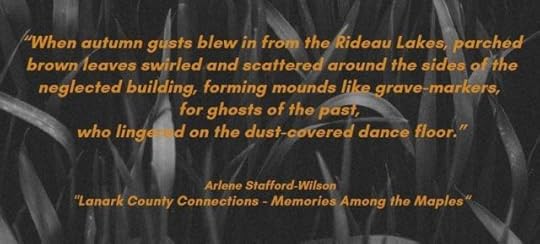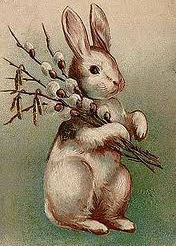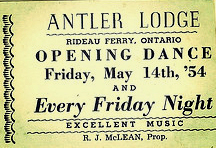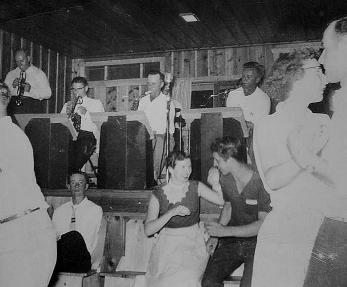Arlene Stafford-Wilson's Blog, page 32
May 12, 2022
Meet Me in DeWitt’s Corners
‘The Corners’ was a phrase heard often in our small community. The Corners referred to DeWitt’s Corners, a mile or so west of our farm, and was located at the crossroads of the Third Line, Munro’s Side road and Cameron’s Side road.
The early settlers in Bathurst Township were keen to have their own church instead of driving to St. John’s Church in Perth, or St. Bridget’s Church in Stanleyville. Roads were treacherous at times in the winter, with deep snow, sometimes freezing rain, or both. John DeWitt, son of a pioneer settler, and his wife Mary Neil knew there was a need for a Roman Catholic Church to serve the growing community. Hoping to improve the situation, they made a promise to donate the land to build a church.
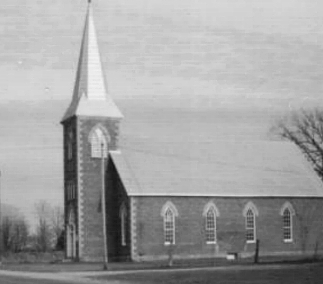
The construction progressed quickly, and the first mass was held on November 23, 1889. The church was packed that day, and this stately building has served generations of families around DeWitt’s Corners and the area for over 125 years and counting.
A bike ride down the Third Line often meant that my friends and I would gather around the millstone at Cavanagh’s general store. It was a central meeting place where we could sit and talk. Between us, we could usually scrounge together enough pocket change to buy some penny-candy at the store.
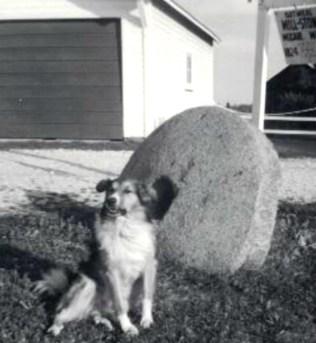
DeWitt’s Corners was a busy place in the 1960s and 1970s, with cars stopping at Cavanagh’s store for gas and groceries, or zooming up the Third Line toward Christie Lake. Christie Lake was a tourist destination with accommodations of all kinds for seasonal visitors. Norvic Lodge, Arliedale Lodge, and Jordan’s Cottages, were some of the busiest places in the summer months.
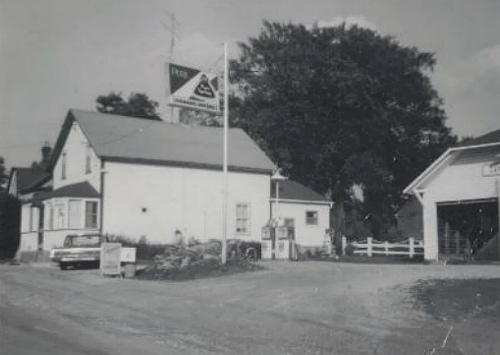
Across the Third Line from Cavanagh’s store was the old Bathurst cheese factory. The factory produced cheese until about 1954 and then ceased operations as other larger factories began to edge out the smaller producers.
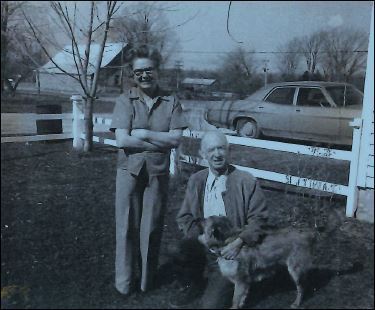
Not far from the ‘Corners’, just up Cameron’s Side Road was the little white school house – S.S. # 4 Bathurst, where many of the members of our family attended school. Mary Jordan taught all eight grades, keeping order in a compact classroom, heated with a wood stove, and bursting with energetic farm kids.

2nd row – Standing Kim Kyle,Betty Conboy, Judy Radford, Janice Jordan , Nancy Radford, Beverly White, sitting in front of Nancy Radford is Bobby-Jean Gamble and beside her is Mary White
Beside Kim Kyle is Brent Cameron, Bryan Tysick, Maxine Closs with her arms around Judy Radford, behind her is Kenny Perkins, Brad Kyle, Susan Turnbull, Darlene Charby,Back row Randy Sargeant, Kent Shanks, Mrs Carrie Barr, Doug Jordan, Brian Miller and Mark Greenley
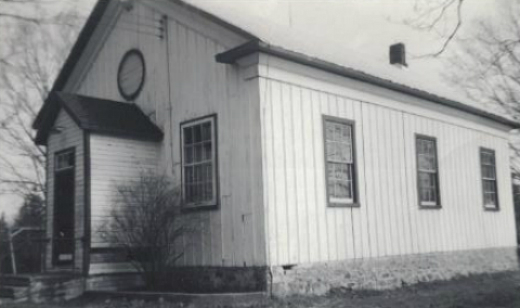

When Mary Jordan wasn’t busy teaching eight different grades, she coached the DeWitt’s Corners softball team. Both of my sisters Judy and, Jackie, played on the championship team in 1959. My brother Roger was on the team in 1964.
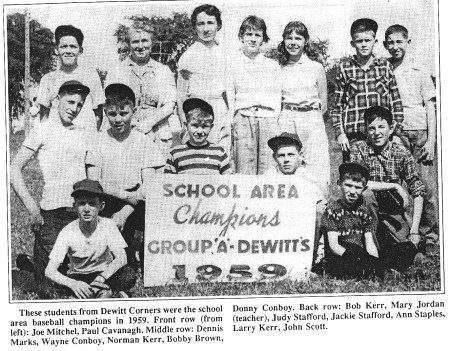
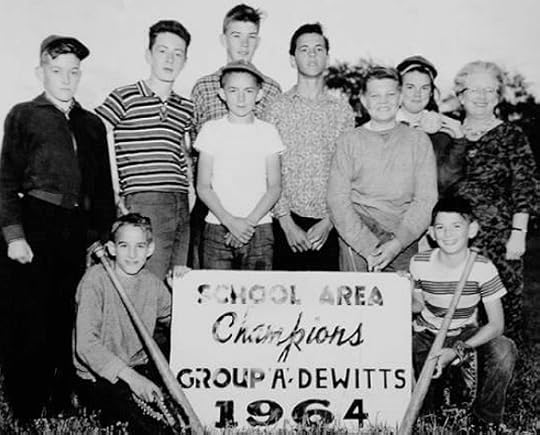
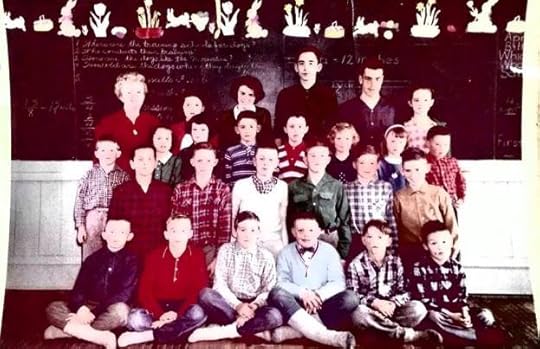
Interior photo of S.S. # 4 Bathurst School
Front row Earl Conboy, David Scott, Arthur Perkins, Ron Brown, John Conboy, Bill Kyle
2nd row Arnold Perkins,Joe Mitchell, Roger Stafford, Norm Kerr, Bob Perkins,Paul Cavanagh
3 rd row Peter Kerr, Betty Conboy, Anne Kerr, Bill Cavanagh, Carl Gamble, Judy Radford, Janice Jordan, Doug Jordan Back row Mary Jordan, Kim Kyle, Connie Conboy, John Scott, Richard Cooke, Sharon Doyle
—–
There always seemed to be a sense of history in DeWitt’s Corners, and intriguing tales of the early settlers were told and re-told around that small hamlet. Most of us in the community were aware that Helen Cavanagh was a member of the DeWitt family, but many may not have realized how far back her roots stretched to the earliest settlers.
William DeWitt, and his wife Margaret Noonan DeWitt had a large family of eight daughters: Helen Mae DeWitt who married Jim Cavanagh, Margaret Gertrude DeWitt, Vera DeWitt who married Ed Brady, Carmel DeWitt Matthews who settled in San Francisco, California, Jean DeWitt Garry, Mary DeWitt O’Hara, Josephine DeWitt who settled in Toronto, and Sophia DeWitt.
Cavanagh’s Store
The store opened on June 3, 1947 – carrying a full line of groceries, confectionaries, and tobacco products. Along with groceries and everyday sundries, Cavanagh’s store also sold gas supplied by Esso, a branch of Imperial Oil. Locals and cottagers, along with campers at nearby Christie Lake, were all pleased to hear that there would be a general store in the area, and they would no longer have to drive to Perth to pick up daily necessities.
Jim and Helen Cavanagh operated the popular neighbourhood store for nearly four decades until they retired in 1985.

Many members of this proud community played a part, and their descendants carry with them the legacy of this historical settlement in Lanark County:
Adams, Allan, Blackburn, Blair, Brady, Cameron, Carberry, Cavanagh, Chaplin, Closs, Conboy, DeWitt, Dixon, Doyle, Fife, Foster, Gamble, Heney, Hogan, Johnston, Jordan, Keays, Kerr, Kirkham, Korry, Kyle, Leonard, Majaury, Menzies, Miller, Mitchell, Morrow, Munro, Murphy, Myers, Noonan, Palmer, Perkins, Popplewell, Radford, Ritchie, Somerville, Scott, Siebel, Stafford, Stiller, Truelove, Turnbull, and Tysick.
Thanks to JoAnne Cavanagh Butler for contributing the photos, and thanks to Janice Gordon, JoAnne Cavanagh Butler, Roger Stafford and Beverly Miller Ferlatte for all of their help identifying our neighbours and classmates in the photos!
For more information about the history of DeWitt’s Corners, and the people who settled in the community, you can read the full version of the story in “Lanark County Classics: A Treasury of Tales from Another Time”
Available at The Book Nook, Perth, Ontario https://thebooknookperth.com/product/lanark-county-classics-arlene-stafford-wilson/
Spark Books and Curios in Perth, Ontario https://sparkperth.ca/
Mill Street Books in Almonte, Ontario https://millstreetbooks.com/
and
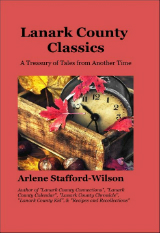
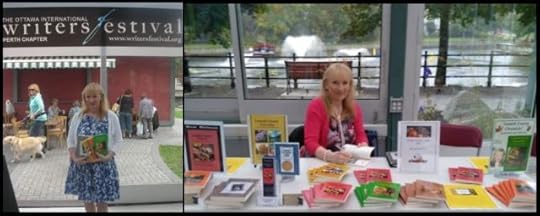
May 7, 2022
Merry Month of May
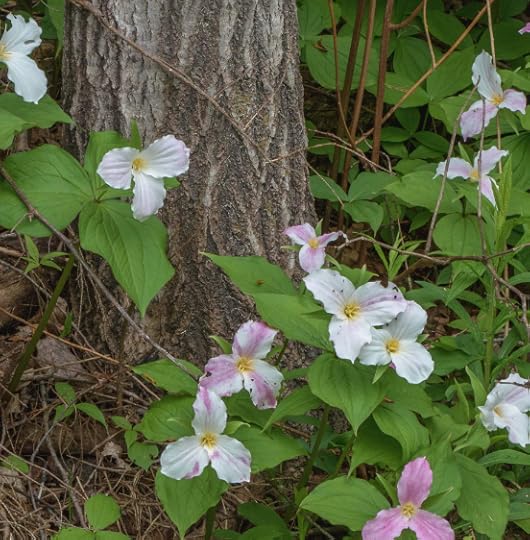
If the fall in Lanark County was big, bold, and colourful, then spring was just the opposite. The autumn was in-your-face, unavoidable, brilliant hues in every direction; yellows, oranges, reds and greens. The soundtrack for this colourful season consisted of hunters’ rifles echoing in the distance, Canada geese honking, and cottagers speeding up and down the Third Line, making their last few trips to Christie Lake, before the cold weather set in for the season.
Spring was the exact opposite. Sometimes Old Man Winter just didn’t want to let go, and spring came quietly, hesitating, like a shy young lady, not quite sure if it was her time to come up on the stage for the show. Sometimes we’d see a sneak preview of spring, and she’d enter ever so softly into the yard, drifting along on a warm south wind, only to be turned back at the gate, as winter stubbornly hung on, refusing to leave.
The yard dried up a bit more each day, and the sun stayed up in the sky a little longer. We’d clean off our boots for the season, and store them up in the attic; only to find snow on the ground the very next day, as though winter had been spying on us through the window, and wanted to make his presence known once again. Up the back-stairs we’d march, retrieve our boots reluctantly, and set them back down on the rubber mat by the kitchen door, all the while feeling discouraged and beaten.
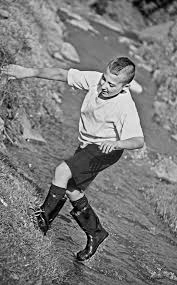
With the snow finally gone, the plants began to poke their heads timidly out of the ground. First, the flowering bulbs along the sidewalk, then thin, frail strands of grass began to stand up straight and green again and next the bashful buds on the trees slowly unfurled their pale green leaves. There was a soft green glow all through the yard, as the plants cautiously came back to life.

Just like the budding leaves around us, the earliest flowers sensed that the frost was past, and it was safe to inch their way out of the chilly ground, and show their colours. The very first flowers to bloom were always the crocuses, tulips and daffodils, and we monitored their growth like hawks. No other flowers of the summer or fall would get as much attention as those first few bulbs that bravely made their way through the cold earth each spring. Mother’s bulbs were planted right along the sidewalk leading up to the old house, so there was no way we could miss their progress.


The sun began to feel stronger and hotter on our faces, the purple and yellow Irises sprang up along the creek beside Perkins’ field. With the snow melted, moisture soaked the ground, and the water drained from the fields, rushed along through the culverts, and into the lowlands. Yellow Cowslips appeared at the edge of the woods, and tiny black tadpoles darted back and forth, searching for food in the cold, clear water that rushed along in the creek.

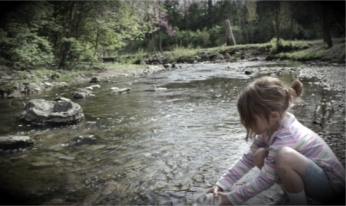
Early in May, the ditches along the side road were painted bright with Trilliums – mostly white, but also pink and some even burgundy coloured. Past the ditches, and at the edges of the fields, there were tiny purple Violets, and fragile, white, Lilies of the Valley, bobbing their heads in the breeze. Taller and bolder, stood the Jack-in-the-Pulpits, and nearby, were the rounded silhouettes of the showy Lady Slippers.




Closer to the railroad tracks, we saw the comically shaped Dutchman’s Breeches, waving in the warm spring winds. Not really a flower, but a much-loved bloom of our spring nonetheless, were the Pussy Willows, and we often took a branch or two back for Mother, to put in her glass vase on the dining room table.


As the days and weeks of spring passed by, the lilac bushes filled our yard with their unmistakable fragrance. If spring had a signature scent in Lanark County surely it was born in these heavy clumps of flowers, that graced almost every yard in the region.

There was no escaping the heady perfume, and even as we opened the car doors, outside of Calvin Church on Sunday mornings, we’d be greeted by that sweet smell, as it drifted across the road from Cameron’s farm, and from up near the manse, where the minister lived. The bumble bees had awakened from their dormant state in the hives, and they buzzed around the white and lavender lilacs, gliding from flower to flower, and just like us, were drawn to their rich, sweet scent.

Along with the rebirth of the flowers and trees in our yard, some of our familiar birds re-appeared, as the weeks grew warmer, and days grew longer. Everyone wanted to be the first to spot one of the robins, returning each year, to the nest in the spruce tree near the house; but long before that, the skies were filled with geese, flying in their familiar ‘v’ formation.
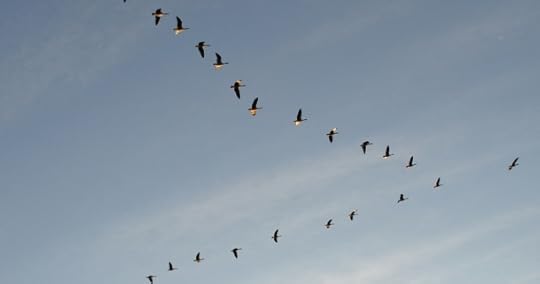
In the weeks that followed, we saw the return of the Red-winged Blackbirds, the Barn Swallows, and the bright orange and black Orioles. The Wrens were a common sight in our yard, and the Killdeers had by far the most distinctive cries, as they soared high in the branches of the maple trees. Less common, were the tall, regal Blue Herons, that appeared in the lowlands near the train tracks. The mallard ducks paraded their young along the duck-pond, near the Fourth Line.

The bees were not the only ones with a taste for something sweet, and the earliest treats from our spring gardens were the strawberries and the rhubarb. The rhubarb grew wild in a clump beside Perkins’ fence, at the edge of Mother’s flower bed, and although it was tart on its own, it was a perfect complement mixed with the sweet juicy strawberries. The rhubarb was picked, cleaned, chopped into pieces, and simmered gently, on top of the old stove. Sugar was added to sweeten the taste, and Mother served the stewed rhubarb in little melamine dishes, for a spring dessert.

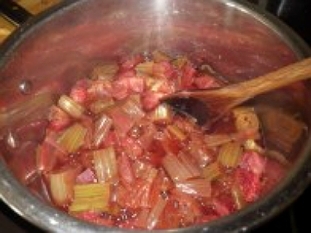
The strawberries and rhubarb were often combined with sugar in a saucepan on top of the stove, simmered slowly, cooled, and spooned into one of Mother’s rich pie crusts. She would cut long strips of pastry, lay them criss-crossed on the top of the sweet combination of strawberry-rhubarb, and bake to a golden brown in the old oven.

When the local strawberries were at their peak, Calvin Church held their annual Strawberry Social. The ladies’ auxiliary, the Calvinettes, bustled about in the church hall, preparing for the crowds that flocked to sample the sweet, rich, strawberry shortcake. Frances Dixon and Audrey Jordan, Betty Miller, Ona Closs, Eleanor Conboy, Merle Korry, Jean Jordan, Wilma Munro, Doris Popplewell, Phyllis Korry, Agnes Stiller, Shirley Tysick, Carmel Jordan, Wilma Scott, Laura Milne, Marge Cook, Betty Johnston, Maxine Jordan, and of course, Mother, would all be busy in the tiny church kitchen. These ladies had worked together on so many occasions, that they moved about in harmony, like a symphony orchestra, each one performing their parts to perfection.
There were kettles to boil, and pots of tea to prepare. Coffee was made in the tall metal percolator, and the china cups and saucers were all arranged on the plastic table cloth, at the center of the kitchen. The long, wooden tables were set up in the hall, and the wooden chairs placed along each side. Cheery vases of spring blooms graced the tables, and of course the stars of the show, the dozens of plates of strawberry shortcake were displayed on a wooden table beside the door, as if to entice the visitors to come and enjoy our first social outing of the season.

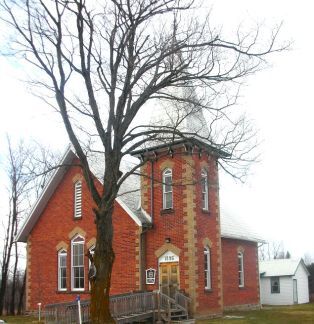
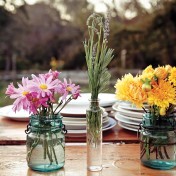
The Strawberry Social was our sign that the nice weather was officially here. The boots and coats were finally packed away for the season, and it was time to reconnect with neighbours and friends, along the Third Line.
Spring may have come slowly and timidly at first, but now she confidently took her rightful place on center stage. Over the weeks she gained determination, and brought forth a sense of optimism, along with her soft greens, and her fragrant flowers. Her bright sun warmed our bones, and lingered on after supper, making our days longer, and our spirits brighter. It was a time for rebirth in the barns, woods and meadows, and for planting the crops in the fields.
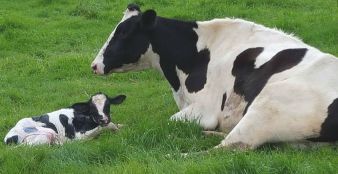

We stepped a little lighter, laughed a little louder, and chatted over the fences a little longer. We gathered bouquets of wildflowers, dined on fresh strawberries and began to ride our bikes up and down the Third Line again. We ran up grassy hills and rolled back down again through the young clover, feeling light and giddy, free from our boots and coats. There were trilliums to pick for Mother, and tadpoles to catch and keep in a jar. Spring had come at last to Bathurst Township, and was it ever worth the wait!
….
Enjoy a taste of spring from Lanark County!Strawberry Rhubarb PiePastry – for double-crust pie, sufficient for top and bottom 9 inch crust.
Filling:
3 c chopped rhubarb
3 c sliced strawberries
¼ c Lanark County maple syrup
1 ½ c white sugar
3 Tbsp tapioca
1 Tbsp all-purpose flour
½ tsp lemon zest
½ tsp lemon juice
½ tsp cinnamon
1 tsp vanilla
3 Tbsp butter cut in small cubes
1 egg white beaten with 1 tsp water
Filling Preparation:
Mix rhubarb, strawberries, sugar, maple syrup, tapioca, flour, lemon zest and lemon juice, cinnamon, and vanilla. Mix and pour onto chilled pie crust. Dot the top of the mixture with butter. Brush edges of pie crust with egg white wash. Roll out the other piece of dough slice into long strips and place half of the strips across pie, then overlap remaining strips on the diagonal. Crimp with fork to seal edges. Lightly brush with egg white – water mixture. Cover edges with foil and bake at 425 degrees F for 15 minutes. Lower temperature to 375 degrees F and bake for 45 to 50 minutes, or until the filling begins to bubble.
…
“Merry Month of May”-an excerpt from “Lanark County Calendar: Four Seasons on the Third Line” ISBN 978-0-987702630
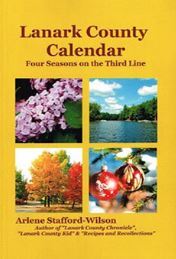
Available at The Book Nook in Perth, Ontario – https://thebooknookperth.com/product/lanark-county-calendar-arlene-stafford-wilson/
Spark Books & Curios, Perth, Ontario https://sparkperth.ca/
Mill Street Books, Almonte, Ontario – https://millstreetbooks.com/
….
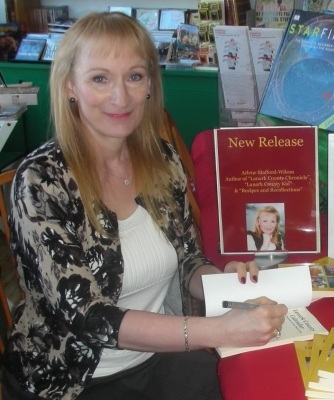
May 6, 2022
Port Elmsley – Drive-In Dreamin’
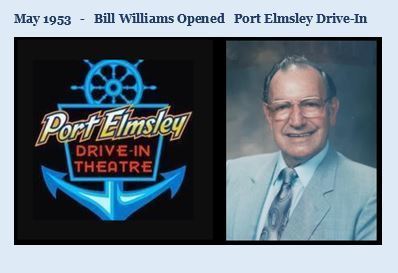
Someone decided one night long ago, that we should save a few dollars, and put a couple of people in the trunk of a car, so they could get in for free, at the Port Elmsley Drive-In Theatre.
I guess we can just chalk this one up, along with the other peculiar things that we did as teenagers. Luckily no one was hurt, but for the three bucks they each saved on admission, it was a pretty undignified way to arrive at the movies.
It’s possible that we weren’t the first ones to try that little stunt. After all, the Drive-In had been open for a long time before any of us had ventured there.

It was in September 1952 that ‘The Perth Courier’ ran a short article about a Drive-In being constructed at Port Elmsley. The article stated that it was the first to be fabricated in this district, and it was built by Gordon White of Ottawa for W.J. ‘Bill’ Williams, of Newboro.
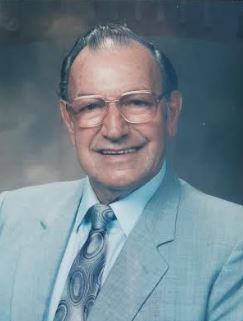
The article went on to say that it would be assembled on a ten acre property, and that the Drive-In would have a capacity for 300 cars. It would feature a design first of its kind in Ontario, where the projector booth would be in a two-story building, nearly 400 feet from the screen. This was a distance that was 150 feet greater than any of the other Drive-In theatres at that time. It was to open the following May of 1953, at a total cost of $75,000. True to their word, they opened on schedule, and called the new Drive-In ‘the Showplace of the Golden Triangle’.
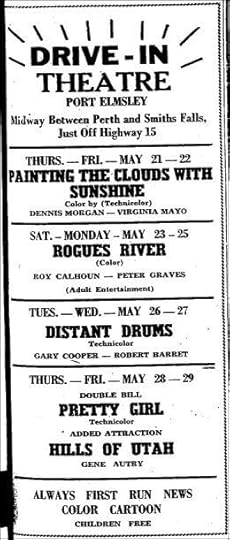
Port Elmsley was indeed a great location for a Drive-In theatre, because it’s situated about halfway between Perth and Smiths Falls. There were always droves of cottagers and tourists staying around Rideau Ferry, and the surrounding lakes in the summer. There were also many residents of the towns and villages nearby, that enjoyed a drive up Highway 15, on a warm summer night, to see some great movies.

Because the Drive-In opened in 1953, many folks had parked in that huge parking lot and viewed many movies on that big screen long before my friends and I ever made it there in the ‘70s. In fact, it was more than twenty years after it opened that it became one of our familiar haunts each summer, as we passed the nights away, under the stars.
Some of us were lucky enough to have gone to the Drive-In as children, dressed in pajamas, playing on the teeter-totter and swings between the first row of cars and the giant screen. As the sun sunk low in the sky, we were having the time of our lives. What could be better than staying up past your bedtime with a whole bunch of other kids, the aroma of popcorn in the air, and watching the cartoons at the beginning of the show?

Every kid knew the words to the concession jingle ‘Let’s all go to the lobby, let’s all go to the lobby, let’s all go to the lobby, to get ourselves a treat.” When we heard that song it was our cue to start heading back to our parents’ cars, because the movie would be starting soon. By the time they played the Chilly Dilly song, about the big, juicy, dill pickles, we were in the back seat, with our pillows and blankets, all ready for the show to begin. Much to the delight of most parents I’m sure, we were asleep by the time the second feature began, and this allowed them some peace and quiet, and time alone – well, almost alone.


We’d usually begin assembling all of our gear during the afternoon. First, we’d pack up a bottle of Windex, and a roll of paper towels, because there was nothing worse than having a big messy streak or some bugs splattered right in the middle of your window.
Mosquito coils were also vital to a relaxing evening. Because of the speaker hanging off of the front window, we weren’t able to close it all the way, so burning a mosquito coil would take care of any of the little pests that flew into the car. If none of the gang had any, we’d have to head out to Canadian Tire on Highway 7, and pick some up before the show. We’d place one of the little green coils on its small metal stand, set it on the dashboard and light it up. Many years later I happened to read on the side of the package that those coils were for outdoor use only. Oh dear!


A couple of pillows and a blanket, were a nice touch, and made movie-viewing a comfy, cozy event. We’d also bring a small flashlight, because nothing was worse for us girls than stumbling around on the gravel path, trying to find our way to the washroom, on a dark, moonless night; especially right after watching a scary scene in a horror movie. That just didn’t work for us. Sometimes we’d bring a roll of t.p. from home, in case they ran out, which happened once in a while during the all-night movie marathons.

I still recall the crunch of the gravel, as we slowed down to enter through the gates, into the Drive-In, and began scouting for a good spot. A good spot to us was front-row-centre, and enough space for the three cars to park side by side, so that we could socialize. We also had to make sure that all three speakers worked, so we would pull into the spots and test the speakers, otherwise we’d have to move all three cars to a new location, maybe a row behind. Of course every row farther back that you were you would have to contend with people getting in and out of their cars in front of you or turning on their cars to clear their windows because they were fogged up for some reason. So, the best real estate in the lot was the front row, right in the center of the screen, and if we went early enough the best spots would be ours.
I think the lads liked having spots near the front, not just for the sake of the movie, but so that their cars were together, and very visible in the front row. There’s no denying that they all had sweet cars. Those three cars managed to get some looks, touring around town, and had been known to burn up more than a little rubber on the quarter mile runs down Roger’s Road.
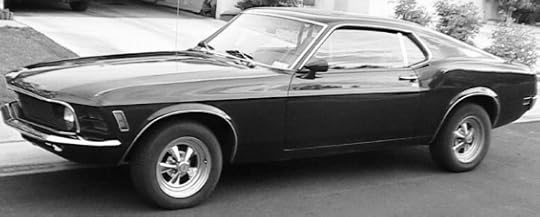

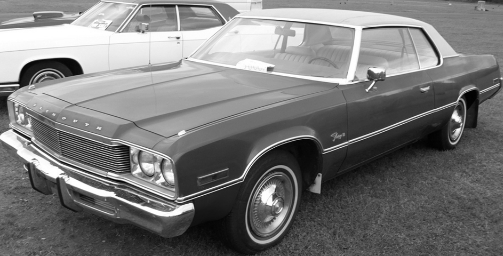
The warm summer air was filled with strains of Foreigner’s ‘Hot Blooded’, or Led Zeppelin’s ‘Stairway to Heaven’, and typically, a little bit of our favourite space-cowboy, Steve Miller, singing “The Joker’; a song that you could say became a symbol of the times. Some have said that it was an era of music like no other, before or since, and the sounds of our generation could be heard throughout the parking lot of the Drive-In, on those sultry summer nights, in Port Elmsley.
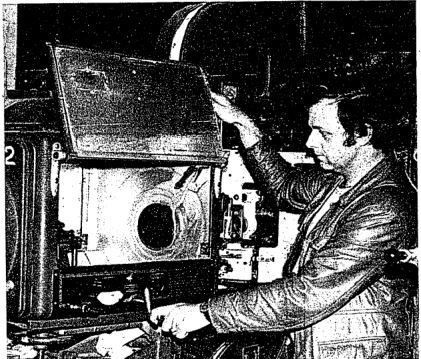
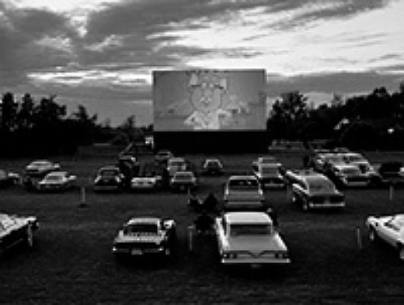
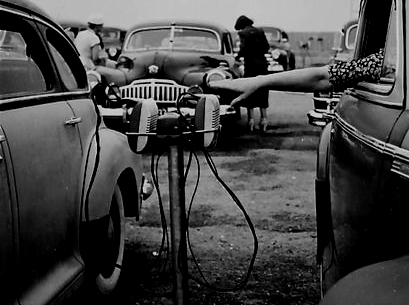
As the sun slid down lower in the sky, the horizon glowed, first in a dusty pink, then a soft purple. There was always one car that began honking their horn, because they believed that it was dark enough to see the movie. After a minute or two, more people started to honk, and then shortly after that the show would begin.
One of the things that we enjoyed the most were the ‘Dusk to Dawn’ shows, where the first movie would begin at dusk, and the movies would continue all night, until the early morning, when it became too light to see the picture on the screen. The movies were played back to back, and were often horror films like ‘The Exorcist’, or ‘The Omen’, or ‘Jaws’. I recall one night that my friend and myself, even after having consumed large quantities of pop, did not want to use the washroom, just in case that giant crazy shark ‘Jaws’ had somehow compromised the plumbing system out in Port Elmsley. We just weren’t taking any chances.
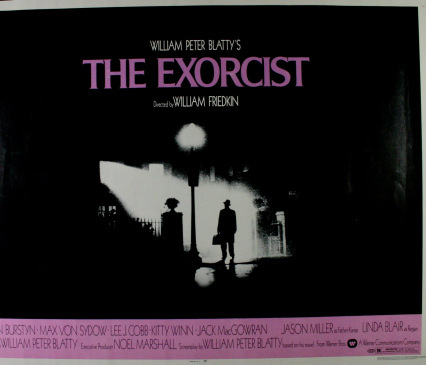

We saw many nights come and go in Port Elmsley. There were some beautiful, sleek, muscle cars in those days, parked row after row, paint glistening in the moonlight. We made numerous trips to the concession stand, in an attempt to fill our unquenchable teenage appetites. We even had a few scary trips in the dark, giggling on our way to the washroom and back. We screamed a few blood-curdling screams, as did some of the folks in the neighboring vehicles one evening, I recall, as the character Jason appeared in his hockey mask in the thriller ‘Hallowe’en’.
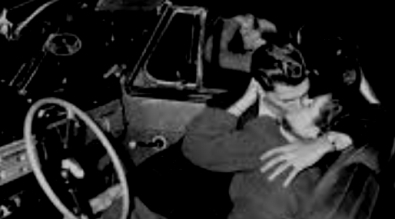
Today, the Port Elmsley Drive-In is one of a handful of drive-ins still operating in Ontario. Leave it to the folks in Lanark County to know a gem when they see one, and to continue to go out, and enjoy movies, under the stars. I hope that in the future that the little kids in their p.j.s, young people, and not so young people, will take the time to visit the drive-in and have as much fun as we did. Take a trip to Port Elmsley and make some of your own memories!
…….
In its heyday, Port Elmsley had many residents, and some of the family names that were common in that area were: Armstrong, Taylor, Stone, Hunter, Weatherhead, Best, Couch, Wicklum, Weekes, VanDusen, Seabrook, Shaw, Sherwood, O’Hara, Moore, Dudgeon, Lavender, Findlay, McTavish, McVeety, Beveridge, and Clements.
…..

Spend a hot summer night at the Port Elmsley Drive-In, and meet some of the fascinating people, with memories from former owner, Jan Stepniak, and recollections from Laura Williams, daughter of founder and owner, Bill Williams. Read their accounts of those special nights under the stars, and what really happened behind the scenes of this beloved local gem, in “Lanark County Collection: Winding Our Way Down Memory Lane”
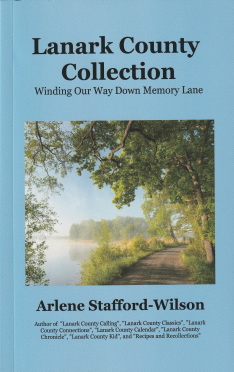
…….
Available at:
The Book Nook, Perth, ON – https://thebooknookperth.com/
Spark Books and Curios, Perth, ON – https://sparkperth.ca/
Mill Street Books, Almonte, ON – https://millstreetbooks.com/
or at http://www.staffordwilson.com

The story “Dusk to Dawn in Port Elmsley” is part of a collection of stories in the book “Lanark County Chronicle”
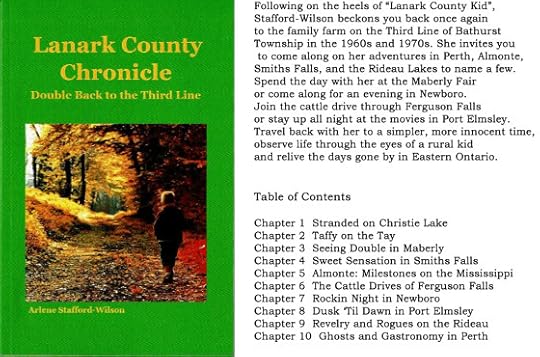
Available at The Book Nook, and https://sparkperth.ca/, in Perth, Mill St. Books in Almonte,
or on online
April 28, 2022
Almonte’s Distinguished Homes -1982
In the spring of 1982, the Almonte General Hospital Auxiliary organized a fund-raising house tour, of some of Almonte and area’s most distinguished homes.





“The 750 tickets printed for the tour sold out in record time,
weeks before the tour date of June 16th.”
It was the first time in the history of the Almonte house tours that the tickets sold out so quickly. The cost was $8.00, and the proceeds were to help the building fund for the Almonte General Hospital.

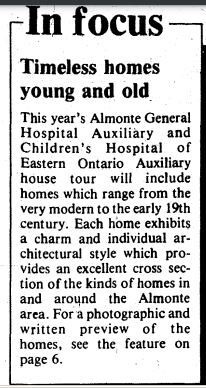

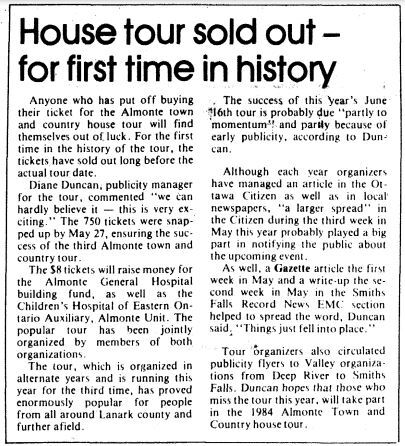
Hanna House
The Hanna House – was on Highway 29, just outside of Almonte, and the property owners were, Dr. Alexander ‘Sandy’ Hanna, (1917-1989), (son of Isaac Alexander Hanna, Millicent Elgey Chesney), and his wife, Ann ‘Nan’ (Dalgity) Hanna), (1919-2008), along with their children, Allan, Brian, and Susan. Ann ‘Nan’ was born in Perthshire, Scotland, and her parents were John Watt Dalgity (1895-1963) and Lizzie Mason Houston, (1892–1979).
“The Hanna House was built in 1981,
with retirement and space for horses in mind.”


“The focus of this bright and cheerful home
is the 26-ft high main floor hallway.”
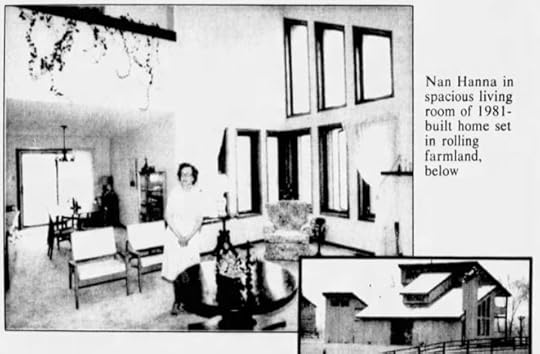
“The 1981-built Hanna home.
set in rolling farmland.”
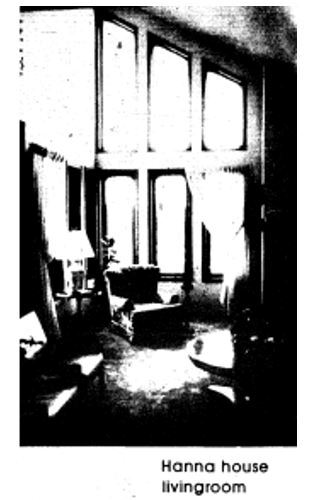
“Custom designed by their son, Brian, a Regina architect.”
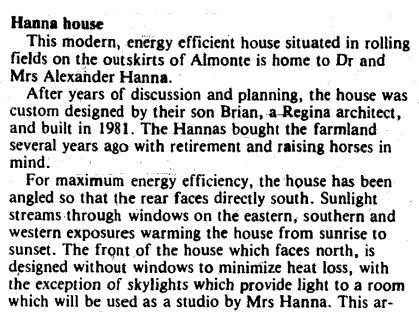

Sheffield House
Sheffield House owners: Judge Alan Sheffield, son of James Garfield ‘Shep’ Sheffield and Viola (Mullin) Sheffield of Arnprior, and Heather (Jardine) Sheffield, their children: Jennifer, Sarah, and Emily.
“Built in 1966, the four-bedroom home, with a pool,
features interesting decor.”
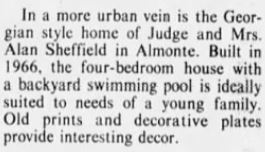
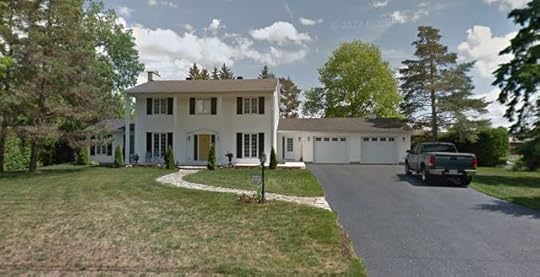
“This comfortable modern Georgian style house
is home to Judge and Mrs. Sheffield,
and their three daughters.”
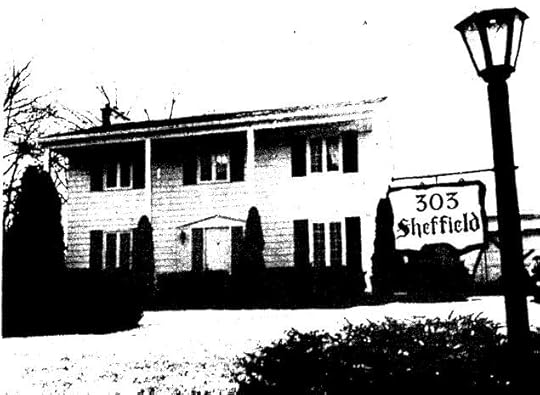


Henderson House
(also known as Glenelvin Farm)
Dr. Ian Henderson, (1928-2006) and his wife, Jane (Mitchell) Henderson bought Glenelvin Farm in Ramsay Township in 1973. Dr. Henderson was born and educated in Glasgow, Scotland
“This rambling country home was built in 1836,
with additions completed in 1890.”


“At the end of a long lane
lined with century old cedars, is Glenelvin.”
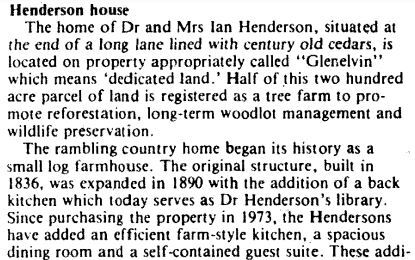
“The rambling country home began its history
as a small log farmhouse.”

Rintoul House
The Rintoul House was located along Highway 29 to Pakenham, near the Cedar Hill turn-off, and the property owners were Laurie Winston Rintoul, and his wife, Janet Ray (Anderson) Rintoul.
Background: Laurie’s parents were George Alva Rintoul and Helen Elizabeth Somerville. Janet’s parents were John Anderson and Irene Hargreaves.

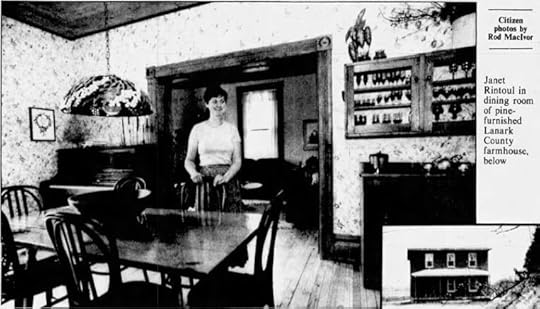
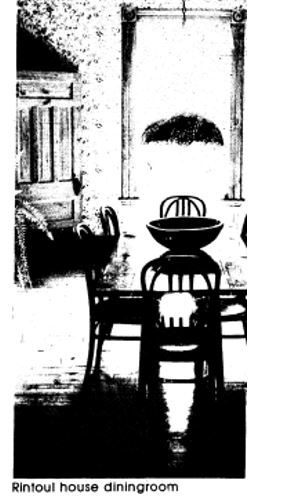
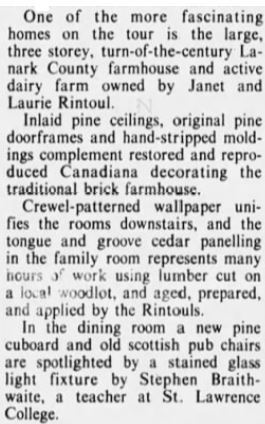

“The tongue and groove cedar paneling
represents many hours of work
as the lumber was cut on a local woodlot,
aged, prepared, and applied by Mr. Rintoul.”
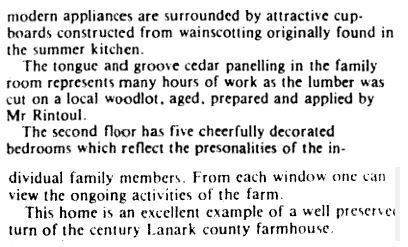
Graves House
“Marney Graves, (1919-2014), purchased
the log house in 1978 for $1,750,
and began extensive renovations.”
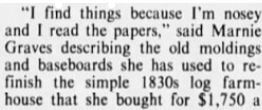
“Graves, a decorating consultant,
has restored and refinished most of the interior
of the old log cabin herself.”
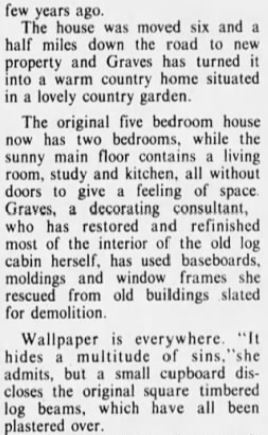
Marny Graves was a well-known Decorating Consultant,
and beautified homes in both Almonte and Ottawa.

Margaret ‘Marny’ (Hardwick) Kemp Graves, born in London, England, daughter of William Hardwick, and was married in 1952, to George Garland Graves (1916-1973). Marny came to Canada in 1947, and worked in the advertising department at the “Ottawa Journal” for 15 years. She worked for 10 years as the Decorating Consultant and Curator at Laurier House, a Victorian mansion in downtown Ottawa, and former residence of Prime Minister William Lynon Mackenzie King. In 1974 she was on site at Laurier House for the celebration of the 100th anniversary of Mackenzie King’s birth.
In an article about the 100th Anniversary celebrations at Laurier House, Marny spoke about the collection, and of Mackenzie King, “You can almost feel him in some of the rooms.”, “The third floor study was Mr. King’s favourite room”
According to the article: “He would work at every opportunity from the study rather than his Parliament Hill office. On every available ledge and wall area there are photographs, paintings, statuettes and other keepsakes collected by the bachelor Prime Minister. According to Marny, “It was what one might call organized clutter.”
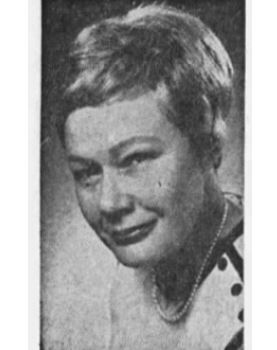
Marny Graves, while she was the Advertising Manager for Armstrong and Richardson
From there, she secured a position with Armstrong and Richardson Shoe Stores, and was the Advertising and Display Manager, responsible for store decor. In the 1980s, Marny worked as the Advertising Manager for Neta Clarke Real Estate, where she specialized in decor, specifically preparing a house for sale so it was more attractive for prospective buyers, what later became known as ‘staging’ a house.
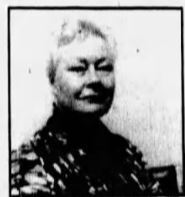
Marny Graves – during her career with Neta Clarke Real Estate
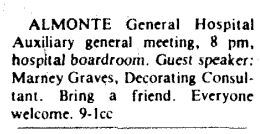

The five-bedroom home was converted to a two-bedroom house
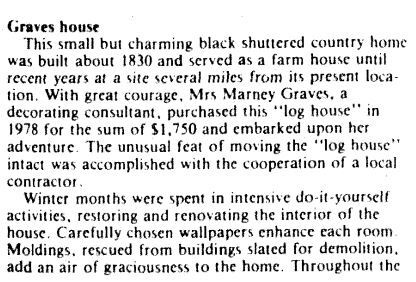

Sadly, Marny Graves, age 94, passed away at the Almonte Country Haven, on September 16, 2014.

The Almonte House Tour of 1982 was surely one that stands out as an event featuring some of the areas loveliest and most stately homes.
I wonder who lives in these beautiful houses today, after many decades have gone by?
Please comment below with your memories and thoughts on these lovely homes.

Sources for Almonte’s Distinguished Homes – 1982:
Article on 100th Anniversary Celebrations at Laurier House, Ottawa – “The Ottawa Citizen”, Dec. 14, 1974, p. 25
Clippings from “The Almonte Gazette” , May 5, 1982, p. 6 and
“The Ottawa Citizen”, Saturday, May 15, 1982, p. 79
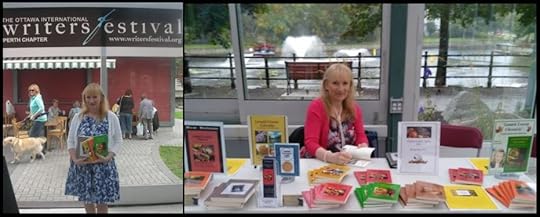
Arlene Stafford-Wilson
April 21, 2022
‘Witching’ or ‘Dowsing’ for Water
[image error]
I often wonder what went through our Mother’s mind, when Dad informed her that there was no indoor plumbing in the farmhouse, on the Third Line of Bathurst, where they would be living, after the war.
They purchased the farm from Dad’s aunt and uncle, partly with the help of a Veteran’s Grant, in 1946, when Dad returned from overseas.
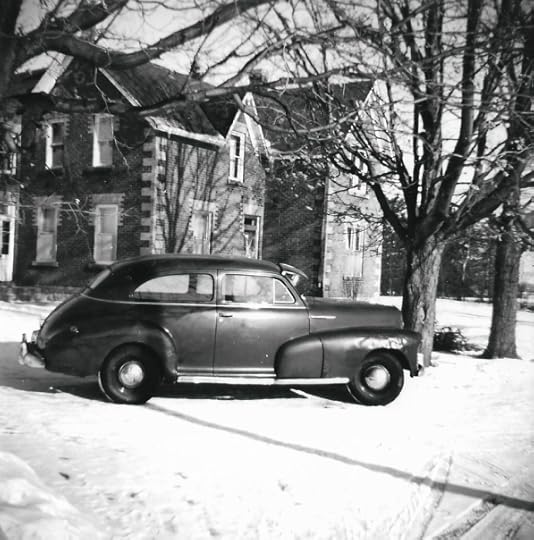
With two babies in diapers, I can’t imagine that my Mother was very happy at the prospect of drawing water from a well, with a hand-pump, a hundred yards from the house. There was a big cement cistern in the basement as well, which collected rain water, but that was just for washing, not drinking.
Water was often in short supply, and almost every year by summer’s end, the well was running dry. When Dad worked for Chaplin’s Dairy, in Glen Tay, he brought water home from the dairy at night, in big metal milk cans, to hold us over, for a while.
Drilling a well was an expensive project to undertake. People paid by the foot, and we’d all heard the horror stories about a neighbour or acquaintance, who had paid for drilling but had not ‘hit’ water in the process.
The practice in those days, back in the 1950s and 1960s, was to hire a ‘Switcher’, or ‘Diviner’, who would walk the property, and use a method called ‘Dowsing’. In fact, this was such a common practice at the time that I recall this technique being called by a few different names: Witching, Switching, and Divining, depending on who you were talking to.
[image error]
Edgar Hamm calls it ‘Witching’, but some call it ‘DowsingIn many cases, a drilling company either had someone on staff, or knew a person with this skill, and brought them along to assist in finding the best spot to drill, where the water was closest to the surface.
[image error]
The Thompson brothers, Jerry and Connie drilled our well, and they hired Jack Dowdall from Glen Tay, to walk the land with the apple branch to detect the water.
“I remember when a new well was drilled, and when the men came with the dowsing stick. I can’t recall when they called it – I think a divining stick or rod, but it was used to find water.
I was there, and asked if I could try it. The men seemed amused, but he told me what to do. I can’t remember if I felt anything or not, but when he found the water, it seemed to pull him and the stick almost down to the ground.”
Jackie Stafford WhartonI recall in those days they used a willow branch, or apple branch, and fashioned it so that it had two short ends, and one long end. Willow or apple was used to create the strongest ‘pull’ to the water. I’ve also heard that peach branches, or hazel branches conduct water in the same way.
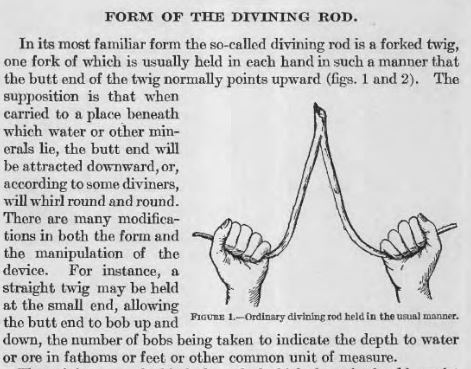
The practice of dowsing, goes back to the 15th century in Europe, where it was used not only to find water, but to detect metals as well.
[image error]
Divining Rod, 18th century BritainDowsing or Witching was used extensively during the building of the railroad across Canada, to find drinking water for the crew, along the route.
[image error]
Water-witching, 1907Farmers have used water-witching for generations, to determine the best place to dig their wells, and to find a source of drinking water for their cattle in a pasture.
[image error]
George Casely uses a hazel branch to find water on his farm, 1942The practice continues to be used today, in some cities in Canada. Metal rods are used instead of the old-fashioned tree branches.
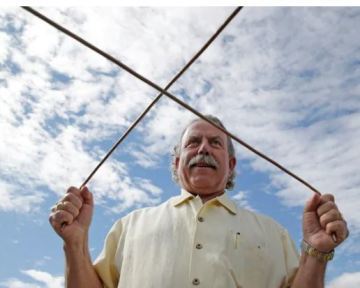
“The city (Ottawa) says it still routinely uses the age-old detection technique, also known as dowsing or water witching.
“Definitely the other technology works more consistently,” said Quentin Levesque, manager of what’s known as the city’s “locates group.”
“Should they have difficulties or troubles using the other equipment, the divining rod is there as well.”
The practice involves walking slowly over an area while holding one of the L-shaped rods in each hand. When the two rods cross, that’s supposed to signify the diviner is standing over water.”
Some Call it ‘A Gift’Can anyone use divining rods, or a willow switch to find water?
Some say it is a gift, and only those with this natural, intuitive, sensing ability can detect water. Some say that it doesn’t necessarily pass from father to son, or down through the family.
Some people claim that dowsing is a psychic ability, and some scoff and say that it is a learned ability, and that anyone can be trained to do it.
Whether it’s a gift, or something that can be learned, it’s still being practiced today by some, to pinpoint sources of water.
Were my parents happy when the well-witcher located the water in our yard, and the Thompson brothers drilled our well? They sure were!
Was it mystical or magical or other-worldly, when our Mother turned on the tap in the old house, and drinking water gushed out for the first time?
I’m sure to her, it was.
[image error]
Audry (Rutherford) Stafford, in front of the old house, c. 1965Jerry Thompson’s siblings: Vera (Percy Wills), Gordenia (Winfred Truelove), Marie (Maurice Wills), Gwen (Frank Turnbull), Connell ‘Connie’ (Phyllis North) Thompson, and Murray (Roberta Livingstone)Thompson.
Jack Dowdall’s siblings: Elizabeth (Clarence Donaldson), Violet (Lawrence Dixon), Lillian (William Kirkham), Laura ( Peter Kirkham), Edna (Joseph Kirkham), Mae (James McLaren), Edward (Mildred Foshay), Garnet (Margaret Stewart), William (Eleanor Gordon), George (Pearl Gordon), and Frank (Carmel Kirkham).
‘Meet’ Jerry, Connie and Jack, as they find the best spot to dig a country well, in the story: “Mysterious Ways of the Water Witcher”,
in the book – “Lanark County Collection” ISBN 978-0987-7026-78
(available at The Book Nook in Perth https://thebooknookperth.com/Spark Books and Curios 76 Foster Street, Perth, Ontario https://sparkperth.ca/Mill Street Books in Almonte, https://millstreetbooks.com/or online at https://staffordwilson.com/
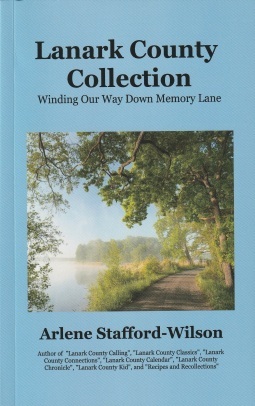

Arlene Stafford-Wilson
April 16, 2022
Rideau Ferry Inn – Those Hot Summer Nights!
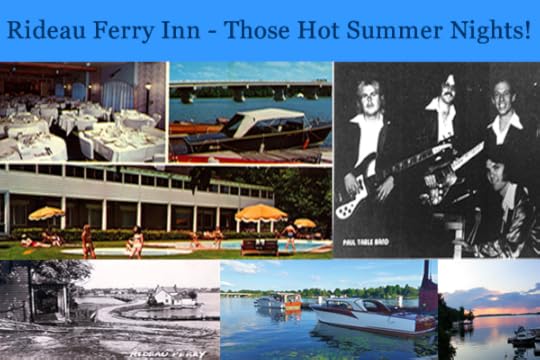
Oh, those hot summer nights at the Rideau Ferry Inn! The dancing, the laughter, stolen kisses, sneaking drinks in the parking lot, and the best live rock and roll around!
Its official name back then, was the Poonamalie Pavilion, but nobody called it that. To my friends and me, it was simply the Rideau Ferry Inn; and you could find us there most weekend nights in the summer, socializing, laughing, and dancing the night away.
Situated along the clear, blue waters of the Rideau, the Rideau Ferry Inn has hosted many generations of tourists and boaters, providing sumptuous meals, comfortable accommodation, and lively entertainment. Arguably, the highlight of the small settlement of Rideau Ferry, our former teenage haunt, wasn’t the original structure at this location. The original building was actually a home.
The original structure was a house built in 1853 by Archibald Campbell. Archibald married Elizabeth Buchanan, a preacher’s daughter. Her father was the Reverend George Buchanan, and was one of the early Presbyterian ministers of Beckwith Township, serving the congregation at Franktown.
Their daughter, Helen Buchanan Campbell, married John Coutts. As her parents were aging, and needed assistance, the couple moved in with them in 1870. During that time, John made some additions to the home, and when he was finished, they not only had ample room for themselves, but had more than enough room to accommodate guests. They began to rent rooms in the house to summer tourists, who were traveling by boat ,along the mighty Rideau waterways.

As the years went by, their home became known as ‘Coutts House’, and eventually, had the reputation of being a very fine hotel. In 1893 a three-storey addition was built at the back of the house. A large dining room was added to the first floor. The second and third floors had fifteen hotel rooms each, and an indoor bathroom.
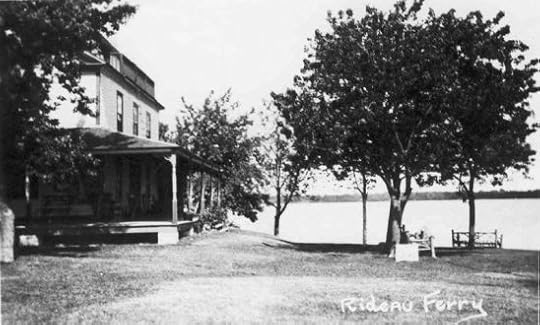
After 1905, the building was rented to a series of business men. During the 1920s and 30s, regattas became popular, and Coutts House held canoe races, and rowboats races. The Coutts family also sponsored competitions for sailboats, and it was the site of many grand daytime celebrations, and intimate evening affairs, for the wealthy travelers, visiting in the summer.
In 1947, Doug Wallace, native of Osgoode bought Coutts House, tore it down, and built a new structure with wood framing, and grey granite blocks. It was a two-storey building, and the second floor featured a large dance area, with seating on three sides.
By the 1960s, the building had become known as the Rideau Ferry Inn, and during this time, became licensed for liquor sales. Up until that time people would smuggle in their own booze, particularly in the roaring twenties when rum-running along the Rideau had its hey-day.

It was in the 1970s, that I first heard the tales about the popular night spot, and all the good times that were had at the Rideau Ferry Inn. There were stories told up and down the halls of the Perth High School – stories of summer romances with cottagers staying at seasonal properties nearby, or the ultra-cool teens that traveled by boat along the Rideau, with their parents. There was also talk of the teenage kids from the States, and their hip clothing and accessories; styles that would take years to reach our little communities near Perth. There were lots of accounts at our high school of the talented rock bands that performed, and of the nights spent dancing to the top hits played by edgy disc jockeys. I couldn’t wait to go and see it for myself.
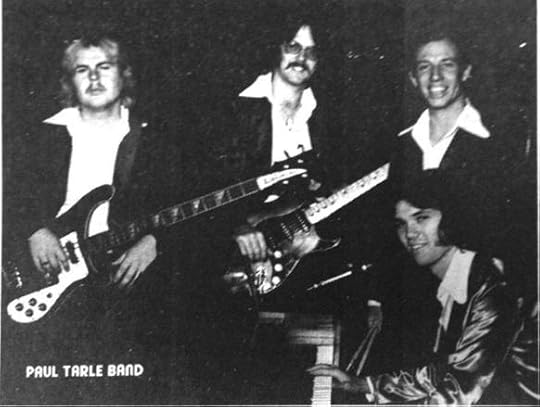
The main house-band at ‘The Inn’ in the early 1970s was the Paul Tarle Band – and we showed off our cool dance moves, as we listened to their popular rock classics.

One of the best parties of our steamy Lanark County summers was the annual Rideau Ferry Regatta. Beautiful, sleek, boats from all over, competing for the sought-after prizes, and the prestige of being ‘Number 1’ on the big lakes.
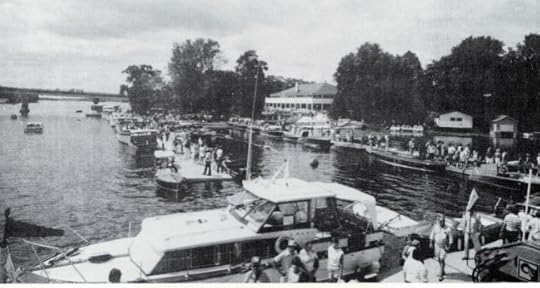
Regattas were all about hot sun, cold beers, the cool, clear waters of the Rideau Lakes, and beautiful boats all around us.

We’ll never forget the annual regattas, or the great music at the Rideau Ferry Inn. Bands like ‘Sammy Seaman’ and his group kept us up until the wee hours. Some nights it was ‘Woody Herman and the Young Thundering Herd’, and other evenings we were entertained by the ‘Paul Chabot Band’. Occasionally, instead of live bands at the ‘Inn’, there was a ‘Disco’ dance provided by a local disc jockey, by the name of ‘Sounds Great’.
Many years after our frequent teenage visits to the Rideau Ferry Inn, the building was purchased by Elmer and Eva Purdon. It was still ‘the’ place at that time to host fancy wedding receptions, or 50th wedding anniversary celebrations.
Because we’d had so many good times at the Rideau Ferry Inn, it was a terrible shock for my friends and I when we heard about the fire in February of 1986, that destroyed our former dance hall. The fire started on the top floor, where the dances had been held for so many years. The ground floor was also destroyed in the fire, and that is where the kitchen, the large dining room, and bar were located.
My friends and I drove down to Rideau Ferry a few days after the fire. I don’t think it was so much out of curiosity, but more out of disbelief. Could it be true, that the place where we’d passed so many of our happy youthful hours was really gone? There were so many memories of friendships, dancing, and all of the special evenings we spent at the Rideau Ferry Inn.
We drove up to where the Inn had stood, and looked around. No one said a word. I think that as we stared at the charred foundation of the building, each of us was recalling our own versions of the times spent there, in our youth. They were such innocent, awkward, magical, teenage times. We sat there for a few more moments, still silent, and then drove away, back up the Ferry Road toward Perth.
…
The building may be gone, but our fond memories of the Rideau Ferry Inn will remain with us forever. We will always remember the music, the friends, and the good times. Those long summer nights, when the stars seemed to shine a little brighter, the sunsets glowed a little softer. The peaceful, pristine, waters of the Rideau Lakes made a perfect backdrop for those innocent days of our youth, when life stretched out ahead of us…..so full of promise, and our dreams for the future.

………………..
An excerpt from – ‘Revelry and Rogues on the Rideau’ – ‘Lanark County Chronicle’ available in local book stores, or online. ISBN 978-0-9877026-23

……..
Local Names:
Although there were lots of tourists and visitors in the summer, they were only there for a few short weeks at most. We became acquainted with many of the folks who lived year-round at Rideau Ferry, and some of the local names at that time were: McLean, Donaldson, Buchanan, Gemmill, Frost, Sewell, Coutts, Gallagher, Beveridge, McKay, Wills, McVeety, Millar, Tully, Oliver, Dettrick, Bethune, Purdon, Hitchcock, Fitzgerald, Hall, Gould, Irving, Joynt, King, McCue, Wallace, McKay and Campbell.
…………
Join the author on a steamy hot summer night, park your car outside the Rideau Ferry Inn in the ‘passion pit’, duck as the beer-bottles fly, and the action heats up outside. Hear some of the top bands from the 1960s, 1970s, and 1980s play some classic rock and roll along the peaceful shores of the Rideau – read about it in the new book, released September 2020:
“Lanark County Collection: Winding Our Way Down Memory Lane”

available at The Book Nook, and Spark Books, in Perth, and Mill Street Books in Almonte.
Also online at http://www.staffordwilson.com
photos: Perth Historical Society, Carol-Ann McDougall, Perth Remembered, Vintage Smiths Falls and Perth, The Perth Courier, Georgia McNally, Vintage Race Boat Shop, and from private collections.For boating on the big lakes – Rideau Ferry Marina
……….
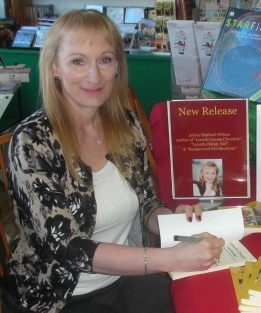
Arlene Stafford-Wilson
April 15, 2022
An Easter Tale from the Third Line
I’d heard some pretty far-fetched claims from my brother Roger before, but this one had to top them all. One spring morning long, long ago, he tried to tell me that our Mother was the Easter Bunny.
“He’d better be careful saying things about the Easter Bunny, I thought to myself, or he won’t be getting anything at all in his Easter basket.”
It was a typical, cool, Lanark County spring, and I could feel the wind from the north make its way into my coat, as I jumped rope on the sidewalk in front of our house. There really weren’t many flat surfaces good for skipping, in our yard.

The brownish spring grass was still wet and mushy, and the driveway was nothing but puddles all the way down the lane – soggy remnants of the melting snow. The old concrete sidewalk was definitely my best bet that day, for skipping, so that’s where I was. Jump, jump and swing the rope around; jump, jump and swing the rope around. Skipping was a pleasant activity to do when I was deep in thought, and my mind was racing a million miles a minute, on that day so long ago.
It was right after Mother left the room, as we finished breakfast on Saturday morning, when Roger had leaned over, and said in a hushed voice, “She is the Easter Bunny!” Roger was older, and he knew a lot more, about a lot of things, than I did, so I tended to believe him most of the time; but this seemed pretty crazy. He had told me the summer before that I wasn’t born in the Perth Hospital like him, and that the family had found me in a cardboard box, near the railroad tracks, back the side road.
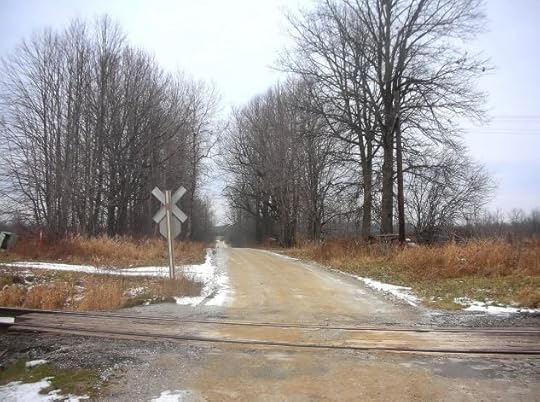
I was very upset when I heard that because I’d always believed that I was the same as everyone else. Feeling ashamed, I ran outside, sat on the rope swing, and started to cry. I was still crying when Dad got home that night, so I didn’t wave at him when he drove up the lane. I was angry because he hadn’t told me the truth.

Dad was smiling as he walked over to the swing, and asked why I was crying. When I told him what Roger had said, his whole face turned red, and he walked straight into the house. A few minutes later he returned with Roger, and made him apologize for lying to me. What a relief to find out that I hadn’t been found in a cardboard box, and was born in the Perth hospital, and that I was related to everyone else. Maybe this latest story about Mother being the Easter Bunny wasn’t true either?
I continued to skip, and once in a while the water on the sidewalk was swept up with the rope, and splashed on me. We’d had piles and piles of snow in the yard that year, and there was water everywhere, including the sidewalk, even though I’d done my best to sweep it off. I kept hoping that the story was just made up, and I tried to think of how it couldn’t be possible for our Mother to be the Easter Bunny.
There was no way that she could travel all over the world in one night, delivering chocolate. After all, it took twenty minutes just to get to Perth. It took ten minutes to get to Cavanagh’s store, in DeWitt’s Corners.
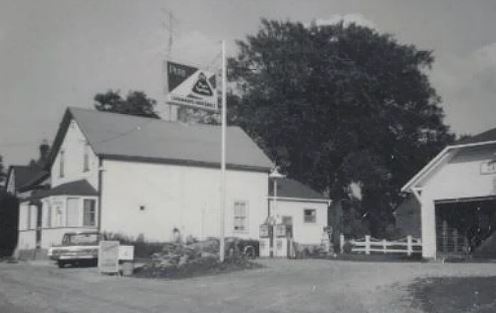
It took at least ten or fifteen minutes for her to drive to Glen Tay School, and drop me off, whenever I missed the bus.
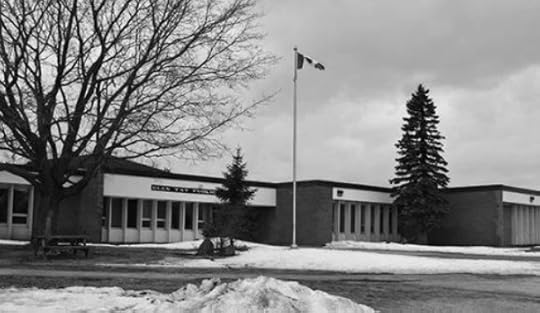
There’s no way that she could cover that much territory in one night. Maybe I should just ask her, I thought to myself, but what if she is the real Easter Bunny? Would she be mad at me because I’d found out?
Just as I was wondering if I should ask her, Mother opened the door, and told me that we’d be going to town soon, to pick up some things for Easter. I hung my rope over the handrail beside the steps, to dry, and came into the house. Mother already had her purse in hand, and her car keys in the other. As I headed back outside, she closed the door behind us. We stepped around the puddles in the driveway, got into the car, and she started it up.
It was a wet, mushy drive down the lane-way, and the Third Line wasn’t in much better shape. Big puddles everywhere on the way to Perth, and cars splashing each other as they passed. This was the dirty part of the year; not quite winter, and far from summer; just lots of mud, water, and small piles of murky-looking snow.
We drove up to Wilson Street, turned right, and in a few minutes we were parking in front of the IGA store.

Mother had read in ‘The Perth Courier’ that the Easter Lilies were on sale, and she wanted to pick one up for Aunt Pat, because we were having Easter dinner at their house.


We walked into the store, and the lilies were near the front entrance. We picked one up, paid, and drove back out to the Third Line.
The days passed quickly, and soon it was Easter morning. There was a little yellow wicker basket at the end of my bed, filled with small chocolate eggs, wrapped in foil, and one tall chocolate rabbit, sitting on shredded green tissue, just like always. The wrapper on the rabbit said, ‘Mr. Solid’, and I peeled back the top of the wrapper, and took a little bite off of his ears. It tasted so rich and creamy that I took another little bite, wrapped him up, and set him gently on the green ‘grass’ in the basket.
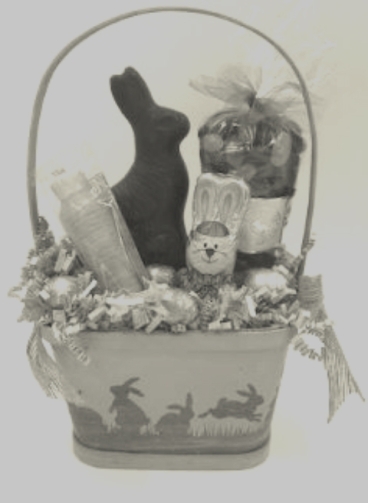
I put on my new Easter dress, which wasn’t really new, but was new to me, and next I put on my little white shoes, with the strap across. I took my small white stretchy gloves, and slid them on my hands. They were a little tighter than the last time I’d worn them, but they would still do. I took them off, and carried them downstairs.
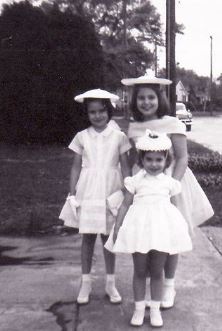
Mother had our breakfast on the table, and she was also getting ready for church. She had her good dress on, and was wearing an apron over it, to protect it. After breakfast we headed up the Third Line, toward Calvin Church.
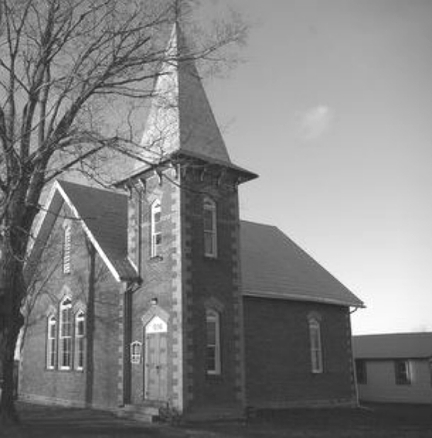
When church was over, we stayed in the churchyard for a few minutes, talking with our friends and neighbours, then headed back home, and had our usual bowl of soup for lunch.
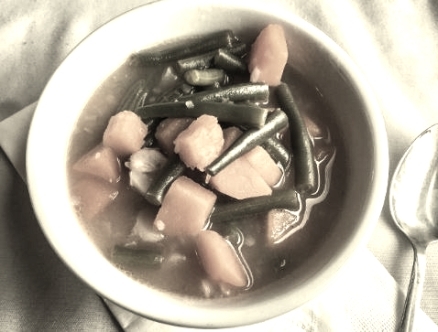
Later that afternoon, we headed into Perth, drove up Gore Street, and turned off onto Halton Street, where Uncle Peter and Aunt Pat lived, at house number 48. Mother had been holding the Easter lily on her lap in the car, and carried it up the steps, to Aunt Pat’s house.

Aunt Pat was busy in the kitchen, preparing the ham and scalloped potatoes.

We always had the same thing at Easter – ham, scalloped potatoes, and fruit cocktail for dessert; and it was always tasty. Everyone went ahead into the living room, sat down, and Uncle Peter was telling jokes, as he often did, and kept everyone laughing.
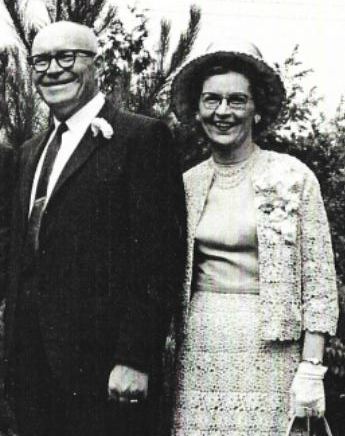
I stayed behind in the kitchen, with Aunt Pat, and waited until no one else was around. I asked her the question that had been bothering me all week. “Aunt Pat, is my Mother the Easter Bunny?”.
Aunt Pat was checking the ham in the oven, and she turned quickly around, and looked surprised at my question. “Who told you that?”, she asked. When I explained that Roger had told me, she laughed, and shook her head, and said, “Your brother is full of beans! Sometimes boys make up stories, and you shouldn’t pay any attention to him.”
What a relief! I finally had my answer, and now that I did the question seemed ridiculous. My hunch was right all along, that Mother wouldn’t have time to deliver chocolate to everyone in the world. It was just another ‘creative’ story from Roger. I would be more careful in the future not to believe his wild tales.
……………………………
Aunt Pat, had solved the mystery, and this little girl became a wee bit more skeptical.
In the years that followed, I had many memorable times with my older brother, Roger, and through the decades he has been supportive, encouraging, and always a true friend.
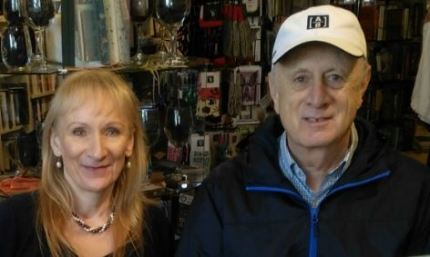
When all is said and done, we have our older siblings, as well as the local school-house pranksters, to thank for our healthy sense of skepticism, and the way it shields us from modern-day predators……. so much bolder and more cunning, than the early ones we encountered, on the Third Line.
…………………………………………….
(an excerpt from “Lanark County Calendar: Four Seasons on the Third Line” ISBN 978-0-9877026-30)
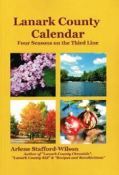
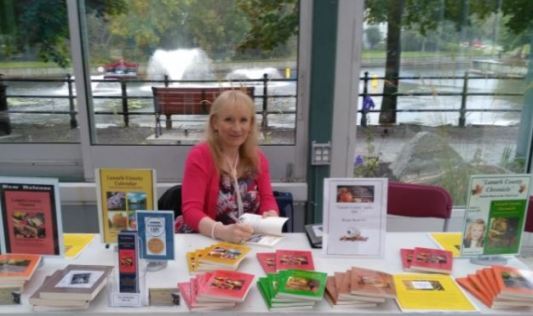
April 11, 2022
Mother’s Farmhouse Hot Cross Buns

It just wasn’t Easter weekend until the old house was filled with the rich aroma of Mother’s home-baked Hot Cross Buns! It was a long-standing tradition at our home on the Third Line of Bathurst, although legends say that these mouth-watering buns were made long before any of us were around.
It was way back, in the twelfth century, that an Anglican monk at St. Albans Abbey, first made these buns, marked each with a cross, and distributed them to the poor on Good Friday.
Hot Cross Buns were an Easter tradition at the Stafford house, along with a juicy baked ham, creamy scalloped potatoes, and of course, velvety sweet chocolate Easter eggs.
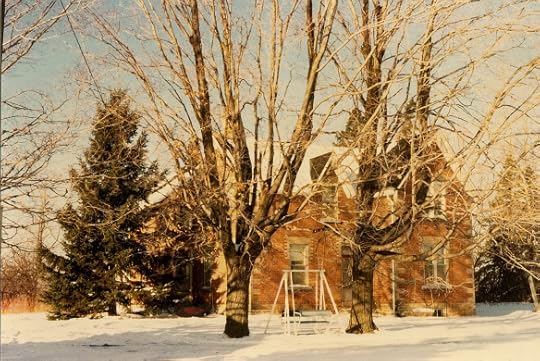
Mother, a keen competitor in the local fairs for many decades, was eventually asked to become a Judge, and her prize-winning baking was a daily treat at our house.
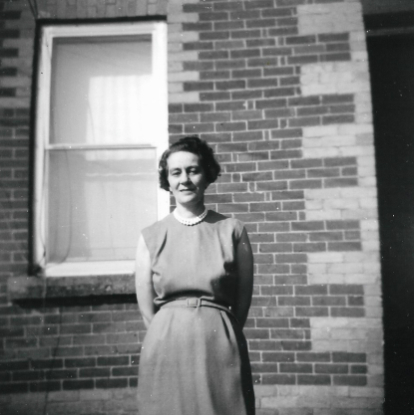
1 c milk
2 1/2 tsp sugar
2 pkt yeast
2 tsp salt
2 eggs (beaten)
3/4 c cold water
7-7 1/2 c flour
1/4 c shortening
2 tsp cinnamon
1/2 c warm water
1/2 tsp allspice
1 c raisins
(1 c chopped peel and 1 c currants if desired)
Mix as for yeast dough, but mix spices with the flour
Stir in the raisins (currants, and peel)
Knead 5 minutes
Let rise until doubled
Divide dough into pieces about 1 1/2″ diameter shape, and place 1 1/2″ apart on a greased baking sheet
Let rise to double
Bake at 350 F
After 15 minutes, remove from the oven and brush with glaze (2 Tbsp water and 2 Tbsp sugar)
Return to oven and finish baking. Brush again with the glaze, and cool
When cool, make a cross on each bun with white icing
Serve with softened creamery butter, or homemade preserves if desired.

Be prepared for the sweet scents of cinnamon and fresh baked bread to fill your home, bringing memories of Easters past, and maybe the beginning of a new tradition in your family!


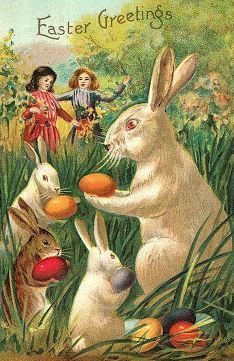

Arlene Stafford-Wilson
For more of Mother’s Farmhouse recipes:
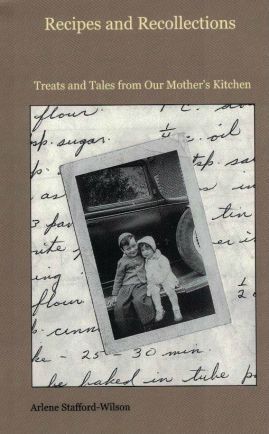
Available at The Book Nook, in Perth, Spark Curios and Books, Perth, Ontario, and Mill Street Books, Almonte, Ontario
and online:
http://www.staffordwilson.comApril 6, 2022
Chaplin’s Dairy in Glen Tay
Whenever I saw the big white and pink Chaplin’s Dairy truck pull into the yard, I had only one thing on my mind; and that was their delicious chocolate milk. It came in small pint-sized glass bottles, and had a round, waxed cardboard cap on the top to seal it in. The cap had a little tab, so that you could pull it off of the bottle, and the pint bottle was the perfect size for small eager hands. After the cap was off, I was just seconds away from tipping the bottle and tasting the richest, creamiest chocolate milk ever produced.
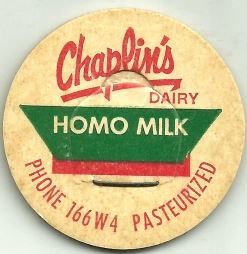
Our Dad worked for Chaplin’s Dairy for decades. He drove one of the big pink and white trucks, and had a regular ‘route’ of customers in Perth. He used a big, black, metal carrier to transport milk from the back of the truck to the customer’s front door. The carrier had eight slots, and each slot held a quart bottle of milk. He also had a book of order slips. It was a small, thick pad of paper about three by six inches, stapled together at the end. There was a top sheet that was numbered, a small sheet of carbon paper under that, and a blank sheet at the bottom. On the top copy, Dad wrote the customer’s name, address, and what they had ordered, along with the total price and that was the customer’s copy. Because each order was written on top of the sheet of carbon paper, the Dairy had a carbon copy underneath for their records.
Once in a while Dad would bring me to the Dairy and I was fascinated to see the many steps that the milk went through in order to end up on someone’s table. It was fun to sit in the big truck so high up, and the ride was very different from our car at home. The truck bounced up and down a lot more, and made a lot of noise, as we drove down the lane, and up the third line toward Perth. It was neat to look outside, and see how much lower the other cars were on the road. Every time we’d go over a bump or hill the truck would bounce again, and of course there were no seat belts in those days, so it was quite exciting.
We’d drive along until we could see Nick and Doreen Webber’s house at the corner, and we’d begin to slow down. Just a bit past Webber’s house we turned right, and Chaplin’s Dairy was a small building on the right side of the road, just up from the corner at Glen Tay.
We’d park the truck, and I would follow Dad into the Dairy. As soon as he opened the door I could see all of the steam in the air. It was really, really, humid. The inside of the building was grey and concrete and the floor was always wet. Sometimes we’d see one of the Chaplin brothers Cameron or John, and they always wore big rubber boots and the steam rose up all around them.
Because the milk came in glass bottles in those days, a lot of the steam was produced from the big machine that they used to sterilize the bottles. When the customers were finished with their milk, they would rinse their bottles (hopefully!), leave them on their doorstep for Dad, and he would bring them back to the Dairy that evening. John or Cameron Chaplin would take the empty bottles and put them through the bottle washer. The bottle washer washed, rinsed, sterilized, and then rinsed again, so the bottles were sparkling clean and ready for the next batch of milk.
The next machine filled the bottles, then capped them with the little waxed cardboard caps. There was a large room toward the back of the Dairy, and that was a cold storage room, where the freshly bottled milk was kept. Most of the time when I visited I saw them bottling homogenized, 2 per cent, skim, and chocolate milk. Sometimes, one of the Chaplins, would hand me a pint bottle of chocolate milk, right off of the filling machine. I would gladly accept, and thought to myself that if Mother was here she would say that I was going to spoil my supper. Dad never said anything though, because he knew how much I loved Chaplin’s chocolate milk.
Chaplin’s Dairy was a family business. The dairy was started by Delbert Chaplin in the early 1900s, and his brother Edgar Chaplin also worked in the business. The Chaplin family owned a large 300 acre farm at R.R 4 Perth and Delbert demonstrated his ingenuity by setting up a method to process their milk from their Holstein herd. At first he operated the business from their farm, but later in 1935 he built the Dairy building at Glen Tay corners.
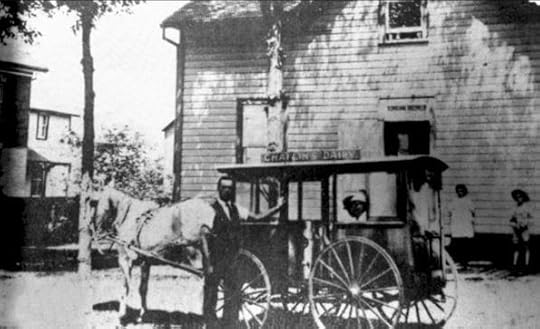
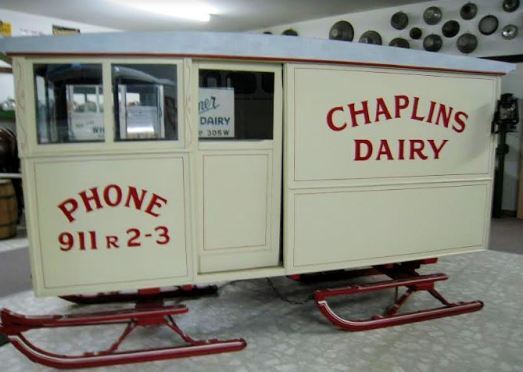
When Chaplin’s Dairy began to deliver milk from the new location at Glen Tay, the quarts of milk were just 5 cents each, and it was delivered by horse and wagon. The milk was not bottled at that time but was distributed to the customers from a large tank at the back of the wagon. The customer would leave a container on their front step or front porch, and Delbert or Edgar would ladle the milk out of the larger can with a pint or quart measure.
The Chaplin farm was producing an average of 3,000 quarts of milk per day and John, Cameron and their brother Don processed the milk and delivered it in the Perth area.
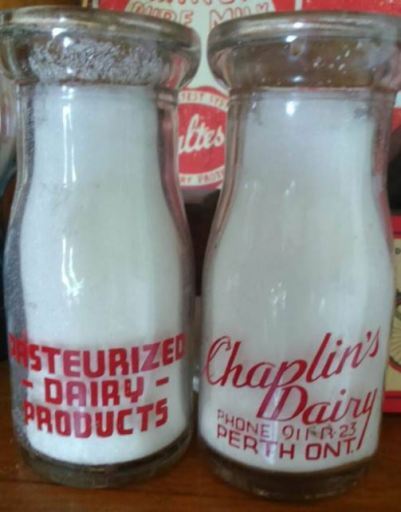
The demand for their milk increased, and they expanded, and made arrangements to have five neighbouring farms supply their business with additional milk. They were also producing chocolate milk and buttermilk at that time. They made butter as well, but only to supply their own families and it wasn’t for sale to the public.
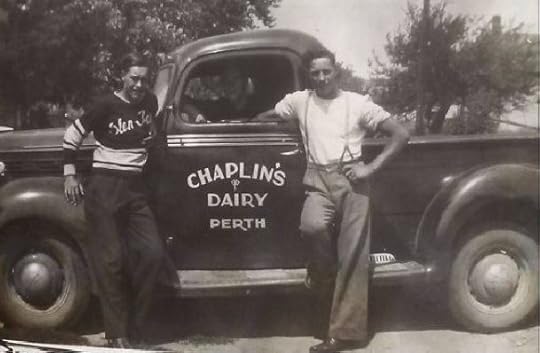
By 1945 the sons had taken over the dairy farm and Don took on the responsibility of managing the farm, but their father continued to be active at the Dairy. They continued to expand their business and operated for many decades. They expanded their product line to include grape juice and orange juice.They were successful and respected in the community and were known for their high quality products throughout the Perth area.
Memories of Chaplin’s Dairy:Tim Stafford: ” When I turned nine, Mom told Dad that she could no longer put up with me on Saturdays because of my bad behavior. That’s the ‘how and why’ of me working with Dad, on the milk truck for Chaplin’s Dairy.
I wasn’t much help at first, but he gave me fifty cents and a chocolate bar purchased at McGlade’s service station, on Gore Street.
Later, when I got my driver’s license, John Chaplin hired me and another high school student, Don Lindsay, to do his milk route, and the Christie Lake cottage route, while he covered the other routes and the ‘inside’ workers for summer vacations.
We were making $25.00 a week, plus we were expected to eat at the restaurants we delivered to on a rotating basis. The daily meal was paid for by Chaplin’s Dairy. John Chaplin’s favourite restaurant was Wong’s Chinese, but Don and I preferred ‘The Bright Spot’, where Muz MacLean, Hillis Conroy’s son-in-law worked. We usually ordered grilled cheese, french fries, and cokes.”
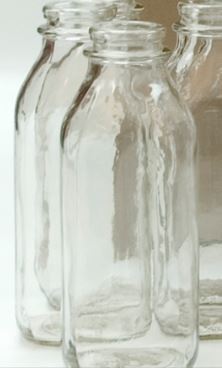
Roger Stafford: “I am not positive, but I believe I was about 12 when I started working Saturdays and summers with Dad on the milk truck. The first Summer I worked with Dad, our brother, Tim, was working with Grant or Gary Chaplin.
They were delivering to the stores and restaurants in Perth, and to summer camps and cottages. They drove to Christie Lake to deliver to Cavanagh’s (general store) and the Lodges (Norvic Lodge and Arliedale Lodge) . I believe Tim had been Dad’s helper on the milk truck, prior to me starting to work with Dad.
We used to be at the dairy by 7:00 a.m., and usually got home between 17:30 and 18:00 in the evenings. When I first started with Dad, we delivered milk out of the back of a pickup with a tarp over the glass bottles to protect them from the sun and cold. Milk was 23 cents a quart bottle, and 25 cents for chocolate milk. We also had pints and half pints in glass bottles. Whipped cream and buttermilk were also carried on the truck. It was not long after I started that we used an enclosed truck to deliver out of. It was much easier, but it had no air conditioning, and a piss-poor heater. When I worked six days a week in the summer, I earned $6. for the week.”
In 1970 Don decided to sell the farm and a few years later in 1974 John and Cameron made the decision to stop processing the milk themselves and just be distributors. In total, John worked for 42 years in the business and Cameron for 30. At that time Chaplins were one of the last small dairies that still processed their own milk. They began to sell milk for Clark’s Dairies in Ottawa. John felt that there were too many changes taking place at that time and that the cost would be too prohibitive to continue processing their own milk.
The milk industry in the 1970s was changing from glass bottles to paper cartons,although most customers preferred the taste of milk in glass bottles. The process of returning and washing the bottles was becoming too time consuming, and too expensive. The federal government was also insisting that businesses use the metric system. This conversion would have meant purchasing new equipment because their milk was sold in pints and quarts, and they would have to begin selling in litres.
At the point in time when John and Cameron decided to sell the business, they had 1,000 customers, and a modern fleet of trucks, doing 12 runs per day, with four salesmen. They also offered a complete line of dairy products which included cottage cheese, eggs and also several types of juice. Their last delivery was made by Cameron, on Sept. 17, 1977 and their milk at that time, was 65 cents a quart.
Chaplin’s Dairy was sold that year to Bill McConachie. Bill was formerly a driver for many years who brought the milk from Ottawa. His plan was to begin delivering milk to Smiths Falls, to increase his market.
It’s likely difficult for the younger generation to believe that milk was delivered door to door each day, or that it had no expiry date stamped on the bottle. The milk was fresh from the cow either that day, or the day before, processed at Chaplin’s Dairy, and delivered right to your door step. There was no need for an expiry date. It’s also interesting that they managed to have a pretty successful recycling process of sterilizing the bottles and getting them back on the trucks by the next morning. That was all accomplished without ‘blue bins’ and recycling plants.
Did the milk taste better in a glass bottle? Yes, it did; and anyone who has drank it from a bottle will tell you the same thing. We certainly drank enough of the stuff at our house to offer an opinion on that. One of the benefits of having your father work as a milk man is that he brought home enough milk for the family, each night, in his milk carrier. When you are raising five children, that’s a lot of milk. We were fortunate to have had such fresh milk each and every day and we never ran out.
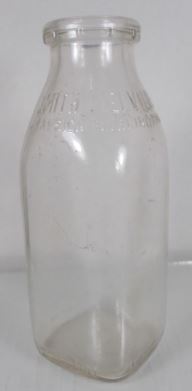
Although the work wasn’t easy, I believe that Dad enjoyed his customers in Perth, and the quick chats had each day. Whenever Mother and Dad shopped at the IGA on Wilson Street, customers from his milk route would often come up to say ‘Hello’, and exchange a few words. Dad was well liked, and at Christmas his customers showered him with gifts. He received many, many boxes of chocolates, packs of cigarettes and one and two dollar bills in lovely Christmas cards. He was always late getting home Christmas Eve, and part of the reason was that his customers took a few extra minutes to wish him a Merry Christmas, and give him their gifts.
We were fortunate to have grown up at a time when there were family businesses, producing high quality products, and selling them door to door. At one time we had a milk man, an egg man- (Mr. Greer), and a bread man, delivering right to our door.
As the years passed by, many of the small family businesses have closed down, one by one, and in many cases our products are produced far away by people we don’t know. There are dates stamped on the products now telling us when they are destined to ‘expire’. We often have no idea what processes are used to make some of the things that we eat, and so we purchase them on faith alone. Gone are the days when we always knew what we were eating, and even knew the people that made the goods.
Now, we are left with the memories of Chaplin’s, our small, local dairy in Glen Tay. It was a place where we could stop by for a visit and be greeted by John, Don, or Cameron in their big rubber boots, clouds of steam rising all around them. With a big smile they’d pluck a pint of chocolate milk off of the line, and hand it to a little girl from down the road. Their products were made with pride and care, and they were confident that their customers would be satisfied. For years, Chaplin’s Dairy was a well known business in our community, and their products were enjoyed in Perth and area homes for many, many decades.

Arlene Stafford-Wilson
(excerpts from ‘Lanark County Kid: My Travels up and down the Third Line’)

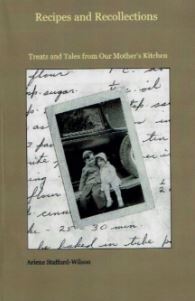
March 31, 2022
Lanark County Dance Halls 1950s, 60s & 70s
First kiss, first drink, maybe even a first love, were some of the memories made at the old style country dance halls in Lanark County in the 1950s, 60s and 70s. Close to home, these community halls opened their doors on the May long weekend, and became the backdrop for cottage crushes and summer romances. With wooden floors polished to a high shine, and the snack-bars stocked with crowd-pleasing favourites, local bands entertained the crowds into the wee hours.
Some were neighbourhood musicians, and many were bands from out of town, but most used a single microphone and one or two small amplifiers. Parking lots became passion pits, and offered privacy for underage drinking, and occasional brawls.
Music echoed across the big lakes and rivers, keeping cottagers awake, and causing parents to wonder what was going on down at the dance hall. Whether you preferred country, big-band or rock and roll there were venues to suit every taste and style.
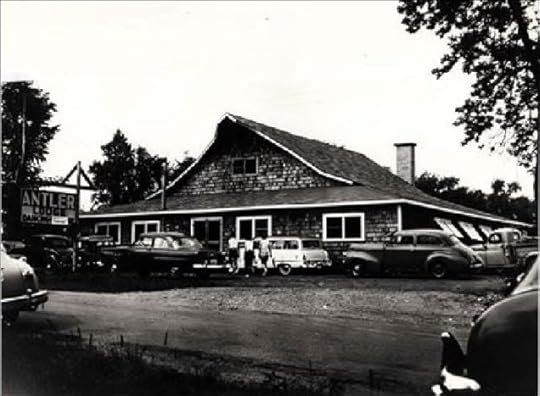
Bill Hannah and the Nightingales
Bill Munro and his Country Rockets
CFRA Happy Wanderers: Ken Reynolds, Ward Allen, Bob King, Vince Lebeau, Lynn Strauff, Marie King
Country Harmony Boys
Country Hoppers: Garry ‘Gizz’ Watt, Fred ‘Pappy’ Ryan, Paul ‘Hiker’ Gurry, Larry ‘Dooley’ Protheroe
Country Rhythm Kings
Don Gilchrist and his Dancers
Family Brown: Tracey, Lawanda, Joe & Barry Brown, Dave Dennison, Ron Sparling
Fred Paquin’s Orchestra (featuring Don Cochrane)
Jerry Badour and His Westernaires
Kenny Jackson’s Valley Cruisers: Harry Adrain, Raymond Donaldson, Gary Barr
Lee Miller’s Orchestra
Lockwood’s Orchestra
Mac Beattie and the Melodiers: Reg Hill, Garnet Scheel, Gaetan Fairfield, Bob Whitney
Mallen’s Melodiers
Mississippi Ramblers
Mississippi River Boys
Riders of the Southern Trails
Ron McMunn and his Country Cousins
Symington’s Orchestra
Tex Montana’s Cowboy Band
Top Hats
Travelons
Valley Ramblers
Wilson Sisters
…and the dance halls where they entertained us:Antler Lodge
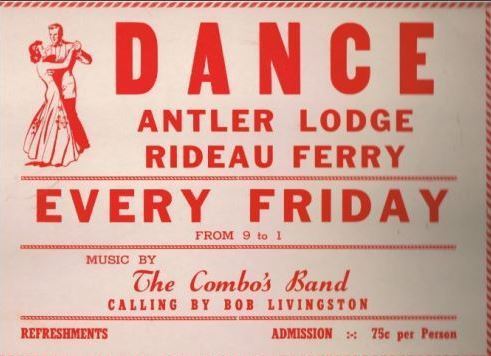
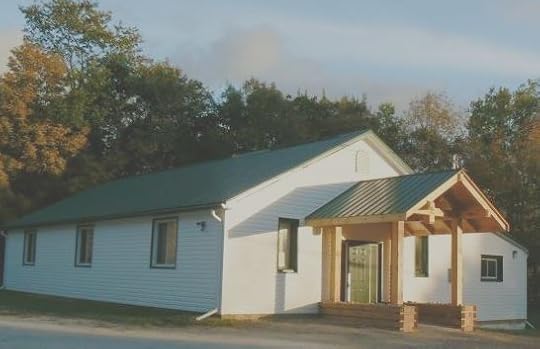
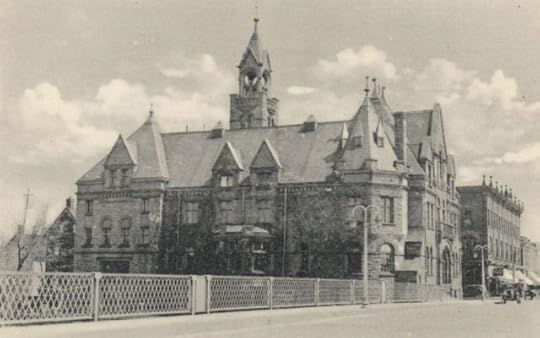

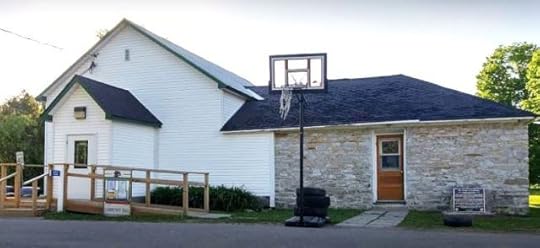


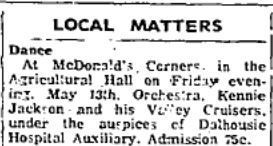
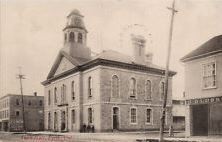
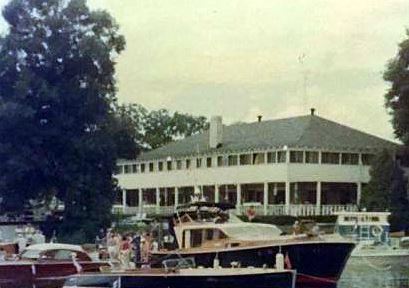


 Westport Scott’s Ballroom
Westport Scott’s Ballroom
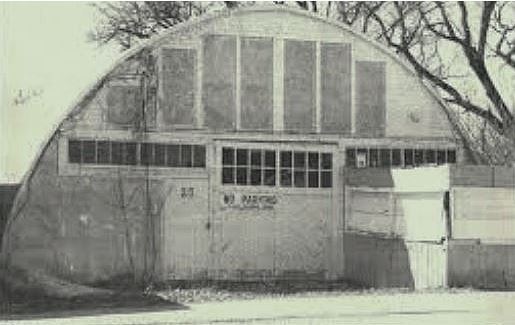
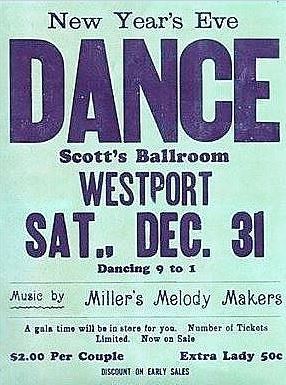
Don White: “The Mississippi River Boys started playing in White, in 1956 or 1957. The dances in White were every Saturday night from late April or early May, depending upon the weather, and running until the end of deer hunting. The season finished with the Deer Hunters Ball. Back then you couldn’t play past midnight on Saturday so the dance was from 9 to 12. I remember working the door (25 cents admission) starting in 1958. I began playing drums with the band in Lanark, on New Years Eve, 1958.”
Mississippi River Boys at the White Hall, Highway 511, mid- 1960s (below) photo: courtesy of Don White
Left to Right: Ed White, Don White, Doug White, George Fyfe, Walter Cameron, Eleanor White
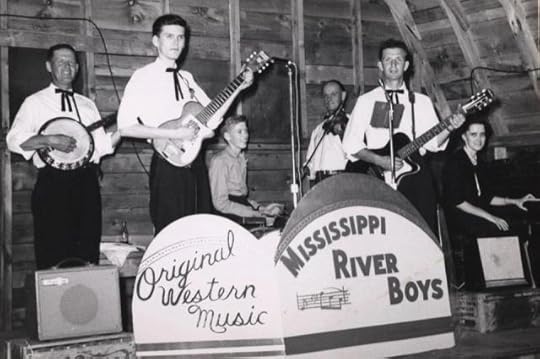
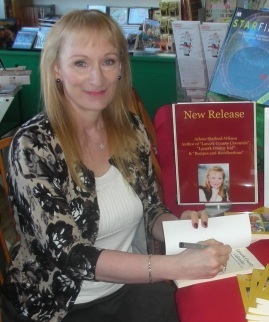
Take a trip down memory lane, back to the old style country dance halls, and the folks who kept us dancing until the wee hours, in the story called “Antler Lodge: Dosey-Doe Along the Rideau” from the book “Lanark County Connections – Memories Among the Maples”

